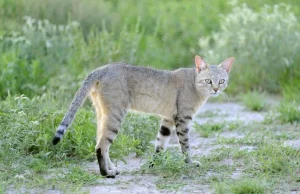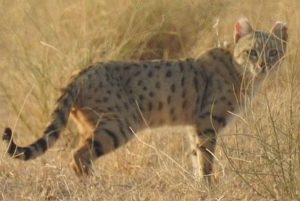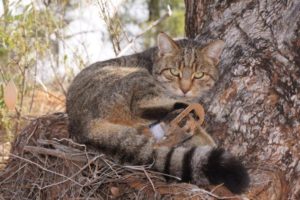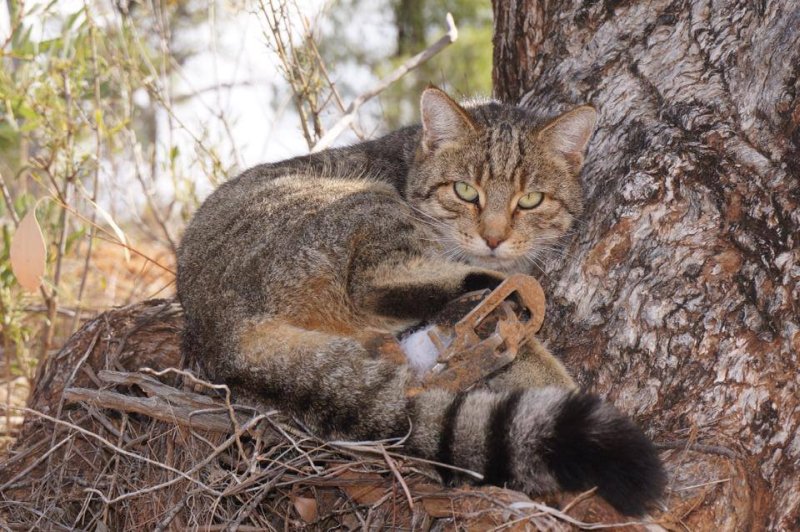Introduction
Have you ever wondered about the fascinating world of wild cats? From the sleek and agile cheetah to the majestic lion, wild cats captivate our imagination with their beauty and grace. Whether you’re a wildlife enthusiast or simply curious about these incredible creatures, this article will take you on a journey to explore the diverse species of wild cats found across the globe.
Domestic Cats vs. Wild Cats
Before we delve into the world of wild cats, let’s first understand the distinction between domestic cats and their wild counterparts. While domestic cats have been bred over centuries for companionship, wild cats retain their natural instincts and behaviors. Wild cats have adapted to survive in various environments, developing unique characteristics that enable them to thrive in the wild.
African Wildcats

In the vast landscapes of Africa, a variety of wild cat species can be found. The African wildcat, for instance, is a small carnivore closely related to domestic cats. These elusive creatures roam the savannas and grasslands of Africa, hunting small mammals and birds with their exceptional hunting skills. African wildcats are known for their sandy-colored coats and distinctive facial markings.
| Species | Habitat | Distribution |
|---|---|---|
| African Wildcat | Savannas and grasslands | Africa |
Asian Wildcats

Moving on to Asia, we encounter a wide range of wild cat species. The leopard cat, found in Southeast Asia, is known for its beautiful spotted coat and agile climbing abilities. Another notable Asian wildcat is the fishing cat, which is adapted for hunting in water. These cats have webbed toes and are skilled at catching fish and other aquatic prey.
| Species | Habitat | Distribution |
|---|---|---|
| Leopard Cat | Forests and grasslands | Southeast Asia |
| Fishing Cat | Wetlands and mangroves | South and Southeast Asia |
American Wildcats

The Americas are home to several iconic wild cat species. The jaguar, with its powerful build and distinctive rosette patterns, is the largest cat species in the Western Hemisphere. Jaguars can be found in rainforests, swamps, and grasslands, showcasing their adaptability to diverse habitats. Another notable American wildcat is the cougar, also known as the mountain lion or puma, which ranges from Canada to Argentina.
| Species | Habitat | Distribution |
|---|---|---|
| Jaguar | Rainforests, swamps, and grasslands | Americas |
| Cougar | Various habitats | North and South America |
European Wildcats
In the European continent, the European wildcat roams the forests and woodlands. These cats resemble domestic cats but are larger in size and have a more robust build. European wildcats are expert hunters, preying on small mammals and birds. Unfortunately, they face numerous threats, including habitat loss and hybridization with domestic cats.
| Species | Habitat | Distribution |
|---|---|---|
| European Wildcat | Forests and woodlands | Europe |
Australian Wildcats

Australia may be known for its unique wildlife, and wild cats are no exception. Feral cats, descendants of domestic cats that have gone wild, have become a significant issue in Australia. They pose a threat to native wildlife and have contributed to the decline of several species. Additionally, the sand cat, with its ability to survive in harsh desert environments, can be found in parts of Australia.
| Species | Habitat | Distribution |
|---|---|---|
| Feral Cat | Various habitats | Australia |
| Sand Cat | Deserts and arid regions | Australia |
Threats to Wild Cats
Wild cats face numerous threats that endanger their survival. Habitat loss due to deforestation and human encroachment disrupts their natural habitats and limits their prey availability. Poaching for the illegal wildlife trade also poses a significant threat, as wild cats are often targeted for their fur and body parts. Climate change further exacerbates these challenges, impacting the delicate ecosystems these cats depend on.
Conservation Initiatives
Fortunately, several organizations and initiatives are dedicated to the conservation of wild cats. These organizations work tirelessly to protect habitats, conduct research, and raise awareness about the importance of these magnificent creatures. By supporting these initiatives and spreading awareness, we can contribute to the preservation of wild cat species for future generations.
Interactions with Humans
Wild cats have long captured the human imagination, appearing in myths, folklore, and cultural traditions around the world. However, the relationship between humans and wild cats is not without conflicts. Human-wild cat interactions often arise due to encroachment on their habitats or conflicts over livestock predation. Balancing the needs of both humans and wild cats is crucial to ensuring a harmonious coexistence.
Conclusion
In conclusion, the world of wild cats is a diverse and captivating one. From the vast African savannas to the dense rainforests of the Americas, these incredible creatures have adapted to a wide range of environments. By understanding and appreciating the unique characteristics and challenges faced by wild cats, we can work towards their conservation and ensure their continued presence in our world.
So, are you ready to embark on an adventure to explore the fascinating world of wild cats? Join us as we delve into the habitats, behaviors, and conservation efforts surrounding these incredible creatures. Let’s celebrate the beauty and importance of wild cats together!
